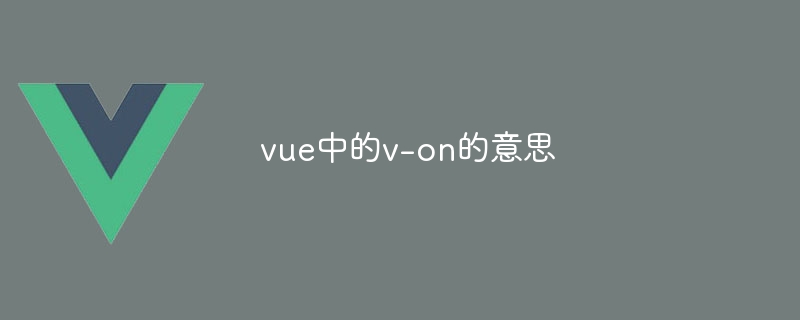Home >Web Front-end >Vue.js >The meaning of v-on in vue
The meaning of v-on in vue
- 下次还敢Original
- 2024-05-02 21:09:35613browse
In Vue.js, the v-on instruction is used to listen to DOM events and handle callbacks. The specific implementation is: listen to DOM events (such as click, keyup) and execute the corresponding JavaScript function or method (through v-on :event="handler") supports event modifiers (such as @keyup.enter) and component events (such as @input) to simplify event processing, improve code reusability, and separate business logic and view logic

The meaning of v-on in Vue
In Vue.js, the v-on directive is used to monitor the DOM event and execute the corresponding JavaScript function or method.
Detailed introduction
v-on The syntax of the command is as follows:
<code class="html"><element v-on:event="handler"></code>
Among them:
-
event: The DOM event to be monitored, such asclick,keyuporsubmit. -
handler: JavaScript function or method to be executed when the event is triggered.
v-on Directives can trigger event handlers in several ways:
- Via DOM events, such as button clicks or keyboard presses.
- By event modifiers, such as
@keyup.enteror@click.prevent. - Through component events, such as
@inputor@update:modelValue.
Example
The following is an example of listening to button click events:
<code class="html"><button v-on:click="onClickHandler">点击我</button></code>
When the user clicks the button, onClickHandler method will be called.
Advantages
The main advantages of using the v-on directive include:
- Simplified event handling, eliminating the need to use Inline event listener.
- Improves code reusability and readability.
- Helps separate business logic from view logic.
The above is the detailed content of The meaning of v-on in vue. For more information, please follow other related articles on the PHP Chinese website!
Related articles
See more- What is the vue life cycle? Detailed explanation of vue life cycle
- 12 excellent Vue backend management system template recommendations (free download)
- 12 Vue high-frequency principle interview questions (with analysis)
- How does a vue subcomponent call the method of the parent component?
- How to delete array elements in vue

